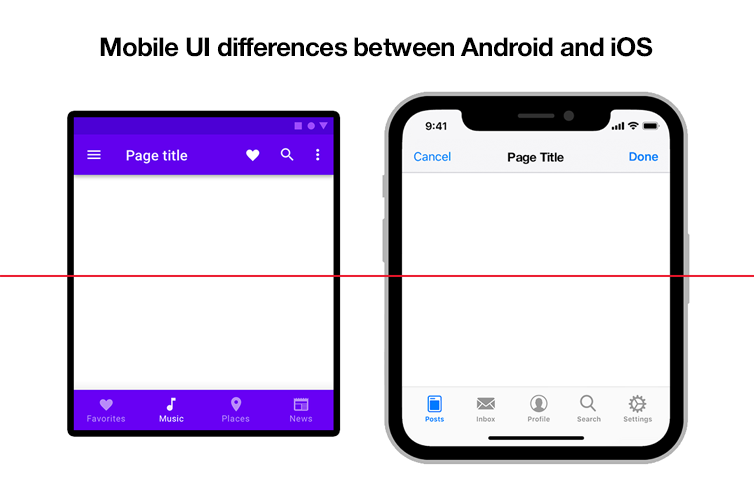If you’re going to spend hours, days, weeks, and even months building an application, the last thing you want is for users to get frustrated and drop it in a matter of minutes.
User experience (UX) is a really big deal for every app developer these days.
Remember how difficult it was to turn off Windows 8? Hiding the shutdown button within a dropdown menu, under a Settings option, inside a hover menu activated by an ambiguous area of the Start screen was not exactly an experience new users enjoyed.
UX is what separates the good apps from the garbage, and it will be more important now than ever for developers to get their apps’ UX right.
So how do you do that?
1) Look at real user data, and design according to their behavior—not necessarily what they say.
If you have an existing app or user base, then it may be tempting to listen to user feedback directly and build the exact changes they ask for. Things like “I wish the UI was less cluttered” can provide a good heads-up to developers that the UI might need improvements, but spacing things out and hiding “less important” items inside menus and containers isn’t necessarily the answer.
Walmart found that out the hard way back in 2011. They famously lost $1.85 billion after listening to customer surveys saying they wanted less clutter in stores. Whoops. Walmart cleaned up their in-store UI—so to speak—by decluttering shelves and spacing out products, but it turns out that having a huge selection of cheap items was actually a huge attraction to Walmart’s customers, whether they knew it or not.
So instead of looking at only what your app’s users say, look at what they do.
It’s probably a good idea to integrate APIs for analytics tools like Alter, Appsee, UXCam, or Smartlook into your app to see how users are really behaving. And if you’re building a native app with a framework like Titanium that runs on a JavaScript codebase, these integrations become especially easy as they’re already designed for web-based use.
Then, look at your users’ behavior metrics to start optimizing your own app’s UX:
- Do usage metrics show that people are dropping off when signing up or logging into your app? Consider integrating SSO into your signup/login process (more on this later) to make it easier for users to get in and get started.
- Do screen visit numbers show that certain screens or features within your app are unexpectedly popular among users? Make those screens and features more prominent and easy to navigate to! Going back to the Windows 8 example, don’t make a common feature like shutting down your PC hard to find.
- Do heatmaps show that most users aren’t scrolling down far enough to see important elements on certain screens in your app? Consider moving those items higher up, or having them accessible from other menus.
2) Integrate third-party APIs that make life easier.
If your users are having a bad time, you’re having a bad time.
Use third party tools and APIs in your applications that are designed to make the user’s experience better. Trust me: not only will they be happier when using your app, but you will be happier when you’re able to build new features into your apps without all the hassle.
For example, security is really, really hard to implement properly. So instead of trying to recreate user authentication and logins from scratch—and suffering countless headaches in the process—use single sign-on (SSO). Integrating SSO from one of the many SSO provider’s APIs can save hours and days of development time.
And for even greater security, integrating multifactor authentication (MFA) steps into your login/signup process can be a major boost to your app’s security. Features like SSO and MFA are just two of many quality-of-life improvements for your users, and a platform like Axway AMPLIFY is ideal for making those integrations easy.
Not to mention, building in good security practices from the start can save you from having to torture users with something like this:

3) Use native APIs to create consistent UI patterns and components.
Sadly, when things look good, most people won’t notice. But when things look bad, everybody notices.
And when Apple users see Android UI elements in their apps, or vice versa, it causes confusion, friction, and chaos! For the best user experience possible, your app’s UI must be consistent with the OS. The differences between the navigation bars and tab bars on iOS and Android are almost night and day:

The good news is you don’t have to be a designer to make your apps look good, and you don’t have to code multiple versions of your app’s UI components to keep the experience consistent across multiple devices if you’re using a framework like Titanium.
If you’re using Titanium to build cross-platform applications, Titanium Hyperloop will give you direct access to every native API available on that device. Then you can build in handy native functionalities, like speech-to-text with Apple’s Speech framework or Snackbar popups on Android, to improve user experience throughout your app.
tl;dr – Measure your user’s behavior patterns and make their common behaviors easier to do; instead of building new functionalities from scratch, save time (and headaches) by integrating third-party APIs to accomplish the functionalities you need; keep your UI consistent across devices by using native APIs and components.

Follow us on social